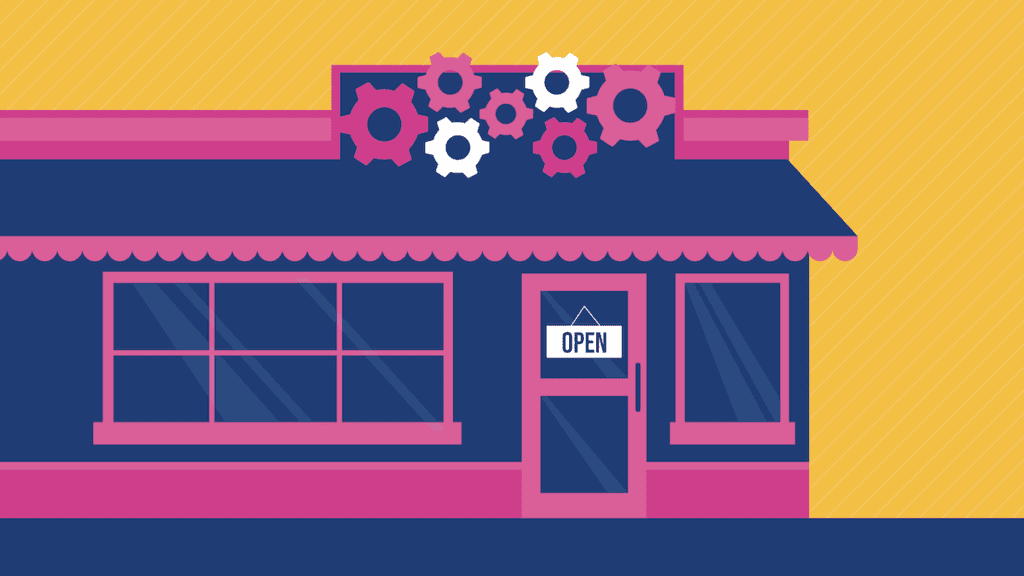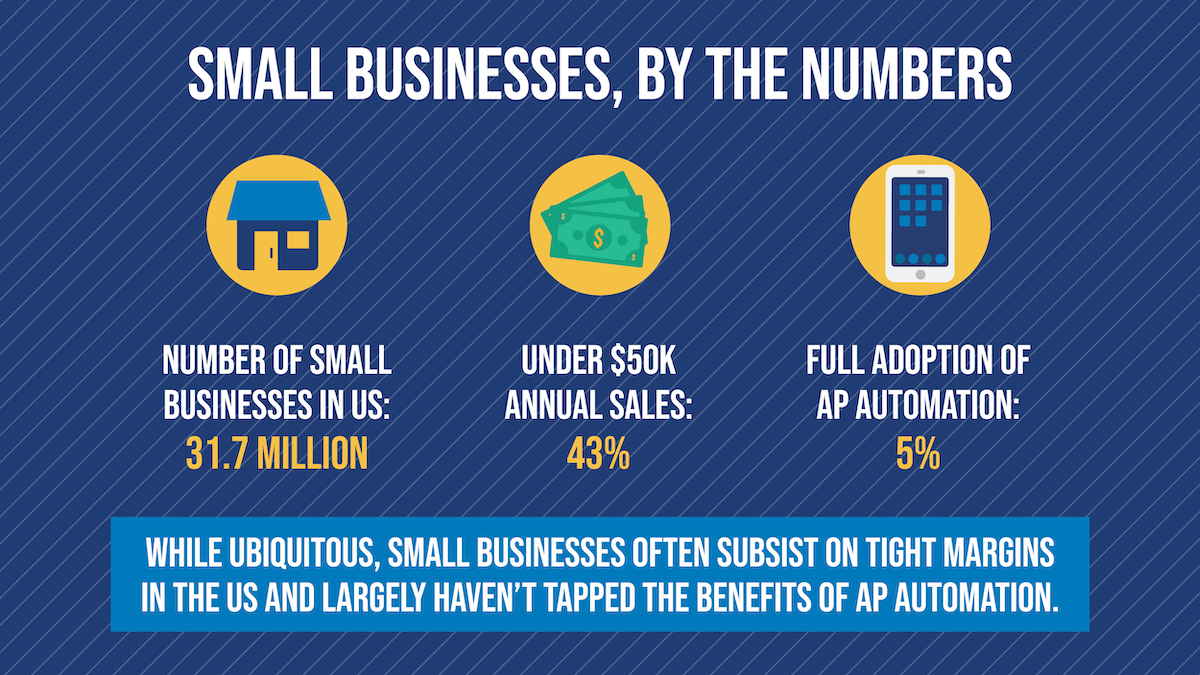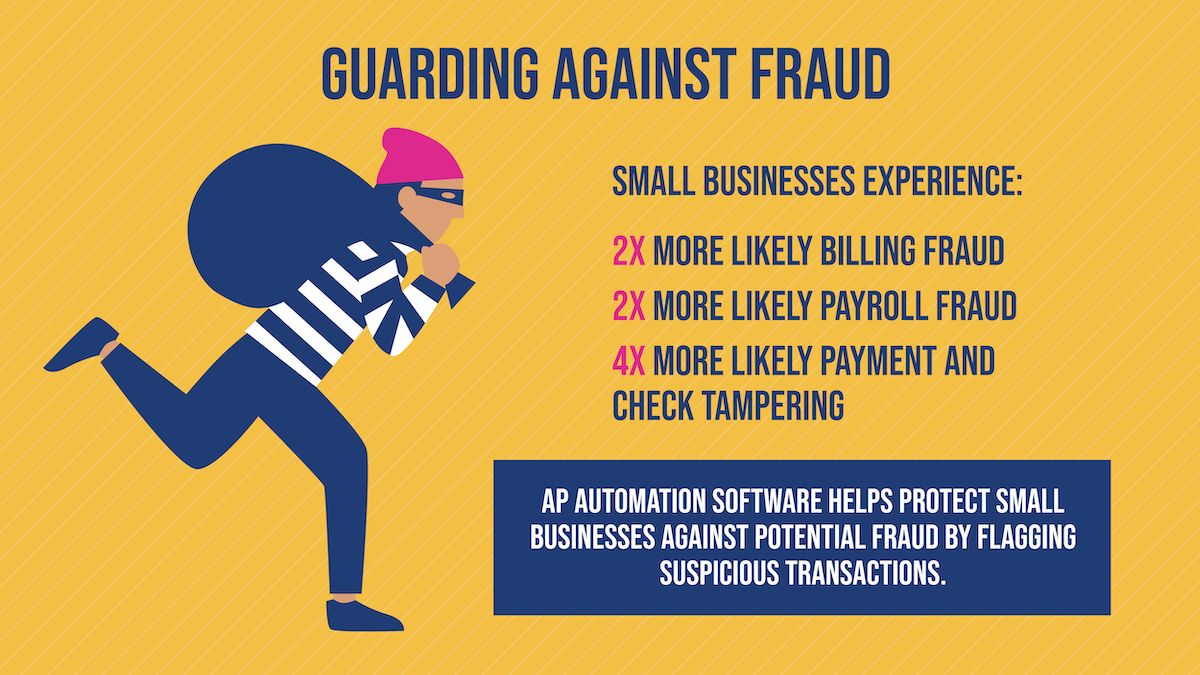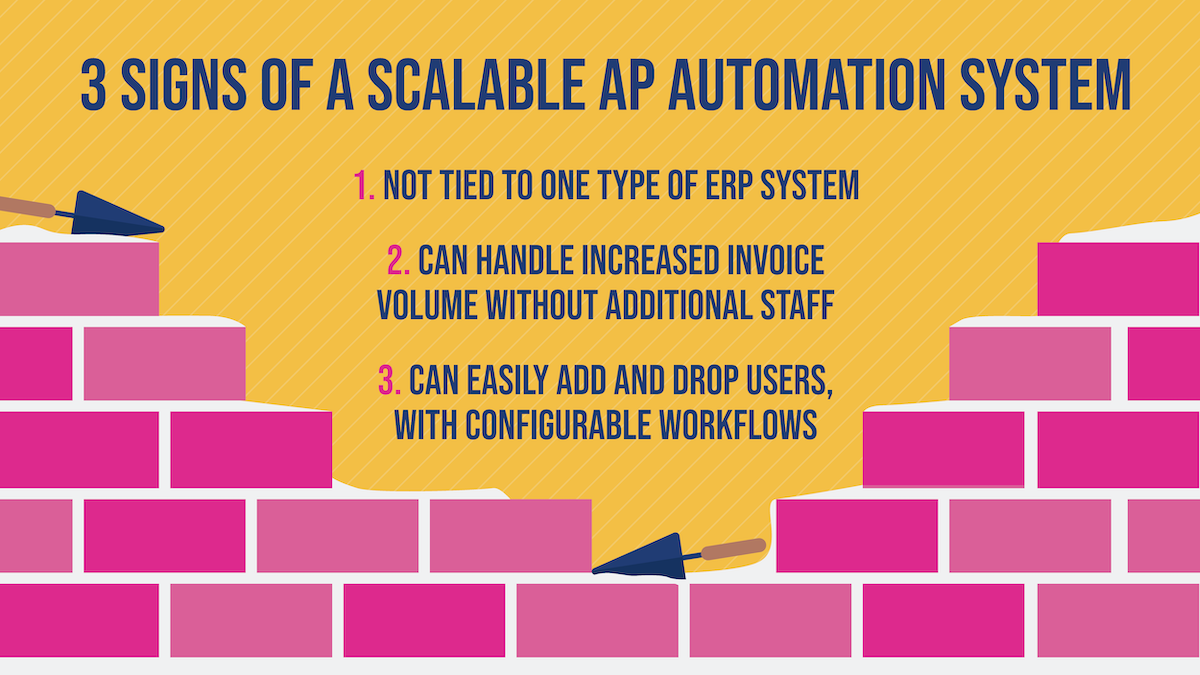Why Small Businesses Should Invest in AP Automation

Times are rarely easy for small businesses. Whether it’s an independent tax preparer, a mom-and-pop automotive business, or any of the millions of other small businesses in the U.S., there’s always another customer to help or administrative task to attend to.
In such an environment, accounts payable automation might often be the last thing on the mind of a small or mid-sized business, or SME. That said, it’s worth making time for AP automation if you want to maximize your financials while minimizing repetitive and manual administrative tasks.
Here’s a look at where things currently sit for SMEs, accounts payable automation small business benefits, and how to find a good AP automation vendor.
Current Small Business Conditions and Accounts Payable Automation Uses

A March report from the U.S. Small Business Administration’s Office of Advocacy showed just how hard the COVID-19 pandemic has been on small businesses, noting, “The pandemic changed patterns of consumption and forced businesses to find new ways of serving their customers. Some businesses have died, some have been born, and many that survive will have been permanently changed.”
Even before the pandemic, though, small businesses didn’t have an easy time of it. When it comes to accounting, SMEs have long had to contend with cashflow challenges, tight staffing, and delays in technological adoption. It’s the sort of environment where accounts payable automation small business implementation can make a lot of sense.
Limited Cashflow
Small businesses often get by on very tight margins, with one business website finding that 43% of small businesses operate on less than $50,000 of sales per year. This tracks with numbers from a 2020 SBA small business profile showing that self-employed individuals with incorporated businesses earned a median of $51,816, while those who hadn’t incorporated earned just $26,084 as a median.
If there’s one thing in common for the 31.7 million small businesses as of 2020, per the aforelinked SBA profile, it’s that cashflow is often a challenge.
Tight Operations
It’s not just cashflow that’s tight these days for small or mid-sized companies. Available personnel can be an issue, too. Accounts payable automation small business implementation can help a department that might be a bookkeeper, an owner, or someone else holding down a one-person division.
It might seem like AP automation would be cost-prohibitive for a one-person accounting operation. However, as we’ll talk about in a bit, accounts payable automation small business solutions can be absolutely invaluable for small (but mighty) businesses that process high volumes of invoices.
Lower AP Automation Adoption Rates (Though this is Changing)
It’s safe to say that in the past, AP automation was geared more towards major companies. Even now, AP automation adoption rates remain fairly low for small businesses, with PYMNTS.com’s March 2020 Next-Gen AP Automation Tracker noting that “only 5 percent of such companies had fully automated AP processes.”
Still, things are starting to change, with Levvel Research noted in its 2020 Payables Insight Report, “Traditionally, large corporations with greater financial and technological resources have driven AP automation, but today, companies of all sizes are incorporating automation in their back offices.”
Different factors are spurring the shift. While small businesses have always comprised a large enough chunk of the American workforce to support technology, only in recent years has cloud-based accounting software advanced enough to make accounts payable automation small business implementation both palatable and affordable for SMEs. There also seems to be growing awareness of the value of accounts payable automation small business implementation and everything it can do for smaller companies.
Benefits of AP Automation for Small Businesses

As we noted, the accounts payable automation small business full adoption rate has remained fairly low in recent years. But that doesn’t mean it isn’t a good time to join the burgeoning movement. Here are a few accounts payable automation small business benefits.
A Helping Digital Hand
While many businesses haven’t fully automated their AP operations, most are at least using some kind of invoice scanning tool for data entry, with PYMNTS.com noting in its March 2020 tracker that just 22% of companies were manually entering accounting data. But this number jumps to 86% for small businesses.
Needless to say, accounts payable automation small business implementation could make a world of difference, with its ability to scan invoices through both rule-based or, better yet, intelligent optical character recognition or robotic process automation.
Rather than have an employee manually keying in data from a paper invoice, it’s far more efficient to use accounts payable automation small business implementation to catch and input every invoice that comes in. It also gives staff a break from the hated task of data entry. As PYMNTS.com noted in its August 2020 tracker, “Approaches that combine AI and RPA tools let AP staff members remove themselves from the most repetitive aspects of invoice handling, allowing them to act only when human judgment is required to authorize payments.”
Better Cashflow
For any number of different reasons, accounts payable automation small business implementation can boost cashflow.
First off, AP automation systems can save a huge amount of money, with PYMNTS.com noting in its April 2020 Optimizing AP & AR Playbookthat one study had calculated the savings at as much as $26 per transaction. It also included more conservative estimates from the U.S. Federal Reserve putting the saves at $4 to $8 per invoice. In addition, 53% of respondents in Levvel Research’s 2020 report cited lower processing costs as one of the main benefits of AP automaton.
How do these systems save money? In short, they cut the invoice processing time dramatically, from weeks or even months to days. They can use AI and machine learning to input invoices into general ledgers and flag issues with invoices, reducing the amount of time human staff must spend on them.
Then there are early payment discounts, generally 1% to 3%, which vendors will often grant if companies are willing to pay their bills early. These discounts frequently go uncollected, though businesses can be in a better position to collect them with automation.
Lower Risk of Fraud
Just as there are many benefits for companies to automate their AP operations, there are plenty of drawbacks for holding off. One of the risks that’s especially fraught for small businesses: Potential fraud.
The Association of Certified Fraud Examiners noted in its 2020 Global Study on Occupational Fraud and Abuse that small businesses were twice as likely as large organizations to experience billing fraud, twice as likely to get hit with payroll fraud, and four times as likely to be the victim of payment and check tampering. It also noted proactive data monitoring and analysis as one effective anti-fraud control but found that 15% businesses with under 100 employees did, while 46% of larger firms did so.
Accounts payable automation small business implementation can help companies guard against fraud, with AI and machine learning able to flag anything suspicious invoices, such as in the case with duplicates.
Finding the Right AP Automation Fit for Small Business

For any small or mid-sized company looking to add AP automation, the good news is that a service provider like Stampli can implement a system in weeks, not months. That said, there are a few things to be cognizant of before making the jump.
How to Calculate if AP Automation is Right for Your Small Business
AP automation software is likely best deployed by small and mid-sized businesses with at least 100-200 invoices per month — ideally, a sufficient enough volume that the savings in invoice processing can equal the cost of the software. It’s also best used by companies that have purchased enterprise resource planning, or ERP software.
The exception to this rule of thumb is anyone whose time is valuable enough that they’ll make more money providing their business’s principal service or product than by sitting in their back office manually going through invoices. In this case, whatever small loss they’ll incur for a basic ERP system and AP automation might be more than offset by the time savings that they can pour into their business.
Finding a Partner Who Can Work With You
Mediocre or poor AP automation vendors try to force companies to conform to their standards. They’ll try to push out solutions that only work with certain ERP systems, require certain payment types, or demand a programmer’s knowledge to operate. Then there’s the AP automation vendors that pose as true automation technologies for accounts payable, all the while they have people manually coding invoices for their customers.
Stampli on the other hand, has true automation with machine learning and artificial intelligence built-in to automate capture, coding, and routing processes. Another reason Stampli is well-suited for helping small and mid-sized businesses is that it looks to work with companies rather than force them to do anything. Stampli’s AP automation platform is compatible with ERP systems from Oracle, SAP, Sage Intacct, and Microsoft, to name four of the biggest providers in the space.
Stampli is also payment agnostic, meaning that customers can pay their vendors in whichever manner they prefer. While there’s been a movement toward ePayments in recent years, Stampli Direct Pay has no problem with anyone who still wants to pay their invoices by check (or by ACH).
Finding a Scalable Solution
Business is hopefully about growth, and Stampli wants this for the companies it works with. As such, the solution is scalable.
Solutions like Stampli allow small businesses to handle increased invoice volume without bringing on more staff. And when additional staff hopefully does join the company, it’s easy to add them as authorized users and to quickly get them trained on how to use the system, with Stampli happy to provide assistance.
And if a small or mid-sized business decides to change ERPs, which can happen as companies grow, no problem. At the end of the day, Stampli can go wherever its partners go.
A great fit for small and mid-market companies. Find out how AP automation can help your business today.
